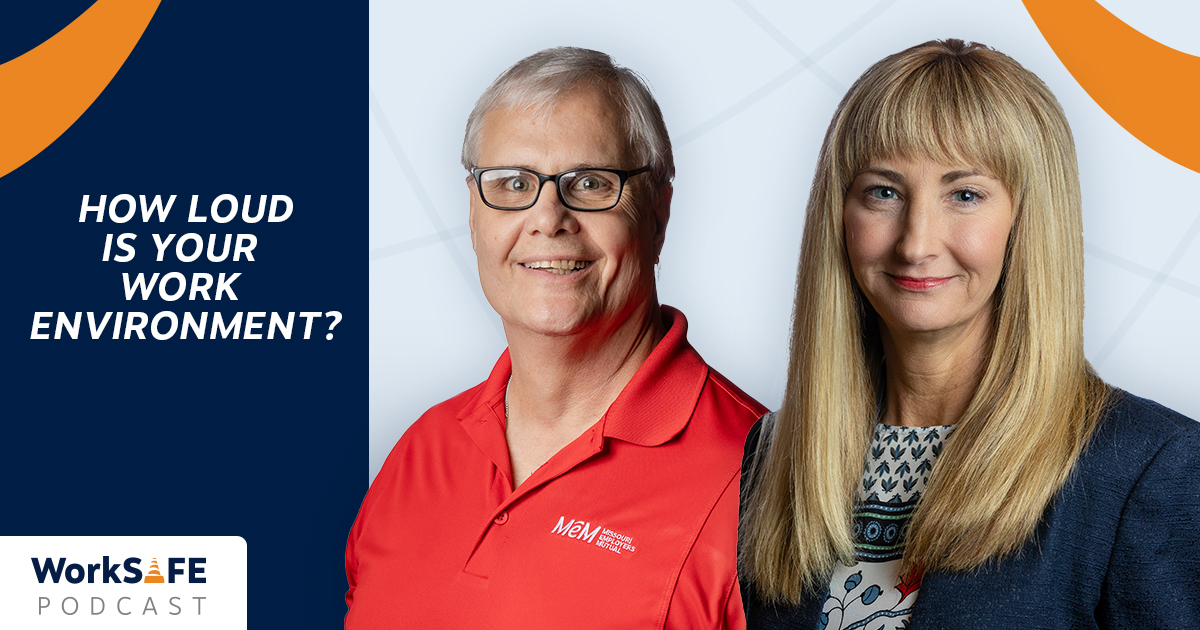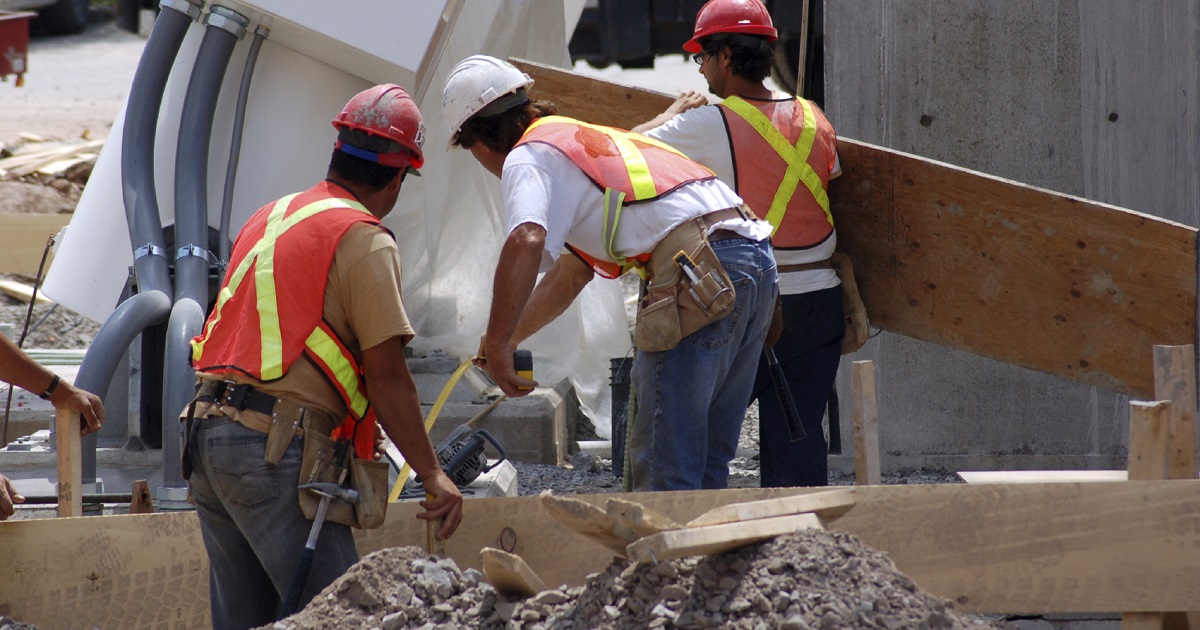For Media Inquiries
Contact Revee White, Director of Marketing and Communications at rwhite1@mem-ins.com or 573.499.4190.
Noise levels are a safety concern that many employees think doesn’t apply to them. Sometimes, hearing loss is just an accepted part of the job. However, safe levels of noise are a part of a safe workplace. Hearing loss can and should be prevented by employers.
On this episode of the WorkSAFE Podcast, we’re joined by Joe Czaicki. He is a Senior Safety & Risk Consultant at MEM. Czaicki is a certified industrial hygienist and experienced safety professional. He has unique insight on OSHA regulations and how they apply to noise safety in the workplace.
First, we’ll discuss why hearing loss is a health risk before a safety hazard. Then, we’ll talk about how noise levels affect your hearing. Finally, we’ll share some of the safety measures employers can put in place to protect employee hearing.
Listen to this episode of the WorkSAFE Podcast, or read the show notes below.
Noise safety: Health risk vs. safety hazard
When it comes to noise safety, Czaicki sees it as a health risk first. Typical safety risks can cause injuries in just a few seconds. Hearing loss doesn’t quite happen that way. “One of the differences in classifying a health risk is that a lot of those health risks, such as noise, they take a little bit of time,” Czaicki explained. It also affects the overall health of an employee.
High noise environments
Noise hazards are present in a number of different industries. For example, sawmills, breweries and distilleries have constantly moving machinery. Manufacturers that use conveyor belts or assembly lines also create frequent noise. The construction industry is another place where loud equipment and work are always present. At companies that operate 24 hours a day, noise can be non-stop.
“A rule of thumb for finding a high noise environment would be if you’re standing right next to someone, or you’re having a conversation face to face with a coworker,” Czaicki shared. “You’re in that work environment, and you have a hard time hearing what that coworker is saying.” If the surrounding noise makes it hard to have a conversation, then you have a high noise environment.
Not the poison, but the dose
How much noise is too much? Czaicki remarked that it isn’t always the level of the noise, but how long you’re exposed to it. “In the world of industrial hygiene, one of the phrases is ‘it’s not the poison, it’s the dose’,” he remarked.
Headphones are a standard piece of equipment for today’s average remote employee. It’s used for calls, meetings and classes. This level of noise exposure is relatively harmless. Some people opt for earbuds or other in-ear devices. These bring sound closer to your inner ear. It can make them more sensitive. It isn’t hazardous in small doses. However, long-term exposure can have a negative effect.
“So if you’re listening to say heavy metal rock all day long and it’s cranked up max volume, of course that exposure is going to be more damaging to your inner ears.”
Noise safety: OSHA’s sound standard
The Occupational Safety and Health Administration (OSHA) sets parameters for noise exposure. They compare the level of exposure to the average work time, eight hours, to determine when hearing damage may start to happen.
When testing noise levels, Czaicki likes to have employees wear a noise decimeter. This measures the level of noise they are exposed to throughout the day, including breaks and lunch time. Each measurement is incorporated into one average noise level.
Eighty-five decibels is the current action level limit, or the amount of exposure allowed before noise protection is required. At 90 decibels, OSHA requires employers to provide protective measures. What does that protection look like?
- Training. Employers must train employees on noise levels and safety.
- Ear protection. Employers must offer three types of ear protection. For example, ear muffs or a variety of earplugs, because each employee’s ear shape and needs are different.
- Hearing conservation programs. Employees undergo a hearing test. This test is repeated annually to determine if there is any hearing loss or damage.
Hearing: A valuable resource that can’t be replaced
Constant exposure to noise has countless health effects. Employees working in noisy areas for hours at a time experience stress and irritability. They also struggle to communicate, which can become a serious safety hazard. But above all, hearing is an irreplaceable resource. There is no medical cure for hearing loss. And on the job, hearing loss is preventable.
Missouri Employers Mutual and Previsor Insurance provide safety consulting services for policyholders. But for those just starting out, Czaicki recommends downloading the National Institute for Occupational Safety and Health (NIOSH) app. This allows employers to test the noise level of their workplaces. A sound level above 85 decibels indicates it’s time to take action.
Hearing is a benefit that is important to protect. “It is a very valuable human commodity,” Czaicki said. “Once we lose that hearing, say from noise-induced hearing loss, it’s gone forever.”
For free safety posters, sample policies, and safety toolkits, visit our Resource Library.

